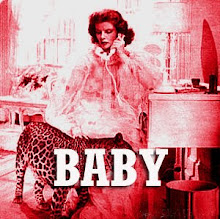quote from their web site
...'
re.act.feminism – performance art of the 1960’s and 70’s today was an international performance and exhibition project exploring the “return” of feminist performance art of the 1960’s and 70’s in form of re-dos, reenactments, appropriations, new articulations, or archival and documentary projects. The exhibition, performance program and videoarchive featured more than 70 artists from two generations, providing an exemplary overview of gender-critical performance art of the 1960s and 70s in Europe and the USA, and investigating its resonances in current artistic productions. The curators’ intention was to extend the perspective beyond the canon of the known and familiar in order to demonstrate the diversity and complexity of (feminist) performative strategies. This included performance movements in Eastern and South Eastern Europe as well as the former GDR (since the beginning of the 1980s) which often developed parallel to and independent of ‘western art’.
Performance art emerging in the 1960s and 70s was infused with ideas of social emancipation and fundamentally influenced by women artists interested in feminism. Performance art explored the intersection of art and life, of private and public. By focusing on the sentient, creating, knowing, speaking body it is the ideal medium to deconstruct the status of women as art objects and appropriate the subject position, to dramatize the social and physical vulnerability of women’s bodies in a patriarchal society and to deconstruct and subvert notions of stereotypical identity. Moreover, as a new art form, occurring outside the confines of the traditional art space, performance was a medium for collective and social intervention in the public sphere.
The artistic avant-garde of the 1960s and 70s, including feminist performance art, are currently regaining attention among a younger generation of artists and also among institutions. There are several reasons for this interest. On the one hand it reflects the (institutional) desire for the historicisation of performance as an ephemeral art form. On the other hand there seems to be a need of a younger generation to actively appropriate history and –so our thesis– a search for radical artistic expressions reflecting and stimulating social change.
The “return of performance art” seems to be a paradoxical notion. Performance art developed in a time of global awakening in the 1960s and 70s as an ephemeral, process-based art form, in which the body and the actions of artists, and sometimes also those of audiences, became the artistic medium. Performance art opposed notions of object-based art and related strategies of commodification and often left the traditional art institutions, galleries and museums. Performance was therefore understood as embedded in the now, the present moment, and therefore haunted by disappearance, as Peggy Phelan’s has famously stated:
"Performance’s only life is in the present. Performance cannot be saved, recorded, documented or otherwise participate in the circulation of representations of representations: once it does so, it becomes something other than performance. … Performance’s being ... becomes itself through disappearance." (Peggy Phelan, Unmarked, 1993)
However, as many authors have claimed successively performance does not only exist in the live act, but is often intrinsically linked to its recording and reaches a broader audience only through its traces and documentation. Authors such as Paul Clarke and Rebecca Schneider have elaborated further that there might even be a liveness to these traces, documents and recordings, as well as to the process of transmission:
Documents – so their thesis- are mostly produced intentionally for posterity, for a future reading and handling and their liveness lies in this future encounter, in the live circulation and reception, which is anticipated in its live production. The documents and traces, the mythologies and stories may trigger phantasies and inspire to re-enact, re-perform or re-act.
The exhibition re.act.feminism focussed on this contradictory relationship between the live act and its traces and documents, the fragmentary archives and the live reception, and reflected on how (performance)history can be reconstructed and a possible future 'invented'.
Bettina Knaup, Beatrice E. Stammer
The artistic avant-garde of the 1960s and 70s, including feminist performance art, are currently regaining attention among a younger generation of artists and also among institutions. There are several reasons for this interest. On the one hand it reflects the (institutional) desire for the historicisation of performance as an ephemeral art form. On the other hand there seems to be a need of a younger generation to actively appropriate history and –so our thesis– a search for radical artistic expressions reflecting and stimulating social change.
The “return of performance art” seems to be a paradoxical notion. Performance art developed in a time of global awakening in the 1960s and 70s as an ephemeral, process-based art form, in which the body and the actions of artists, and sometimes also those of audiences, became the artistic medium. Performance art opposed notions of object-based art and related strategies of commodification and often left the traditional art institutions, galleries and museums. Performance was therefore understood as embedded in the now, the present moment, and therefore haunted by disappearance, as Peggy Phelan’s has famously stated:
"Performance’s only life is in the present. Performance cannot be saved, recorded, documented or otherwise participate in the circulation of representations of representations: once it does so, it becomes something other than performance. … Performance’s being ... becomes itself through disappearance." (Peggy Phelan, Unmarked, 1993)
However, as many authors have claimed successively performance does not only exist in the live act, but is often intrinsically linked to its recording and reaches a broader audience only through its traces and documentation. Authors such as Paul Clarke and Rebecca Schneider have elaborated further that there might even be a liveness to these traces, documents and recordings, as well as to the process of transmission:
Documents – so their thesis- are mostly produced intentionally for posterity, for a future reading and handling and their liveness lies in this future encounter, in the live circulation and reception, which is anticipated in its live production. The documents and traces, the mythologies and stories may trigger phantasies and inspire to re-enact, re-perform or re-act.
The exhibition re.act.feminism focussed on this contradictory relationship between the live act and its traces and documents, the fragmentary archives and the live reception, and reflected on how (performance)history can be reconstructed and a possible future 'invented'.
Bettina Knaup, Beatrice E. Stammer














No comments:
Post a Comment